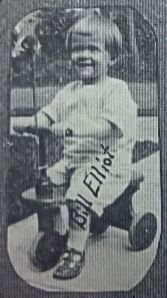The ATA was formed shortly before the war was declared by Gerard d’Erlanger, the Director of British Airways. He foresaw that the war would make it impossible for commercial and civilian pilots to continue flying due to air travel restrictions and the inability of older and less able pilots to join the RAF. He realized these experienced pilots could serve their country by providing other air transportation services. By the time war was started in September of 1939 they had begun forming the organization and selecting pilots.
The war heated up quickly and the demand for ATA pilots increased. There were not enough men to fly all of the ferry trips and they decided to allow women to fly. There is a great website dedicated to the memory of the women who flew for the ATA called British Air Transport Auxiliary . It’s focus is on the female pilots but includes a lot of background information on the services and sacrifices these pilots made. There is also an excellent book by one of the pilots, Lettice Curtis that gives a lot of details of the day to day lives of the pilots.
The ferry pilots were assigned to pools located near the factory they would be ferrying planes from. Bill would have been assigned to one of these pools and most likely moved from one to another as needed. On the day of his accident, February 8, 1942, he was flying from Sherburn-in-Elmet Airfield in North Yorkshire, where there was an aircraft production factory. His destination was Kirkbride in Cumberland. He was flying alone in an Avro Anson.
We know from existing accident reports that Bill crashed en route at Buckles Heath, South Stainmore near Kirby Stephen in Cumbria at about 2:30 p.m. It is noted that the aircraft was flying over the Pennines in bad weather and collided with the ground due to poor visibility. The Pennines are less than 3000 feet in altitude and are more like large hills or high ground known as fells rather that what we would consider mountains. Lettice Curtis wrote about visibility problems when flying in her autobiography. She wrote that they relied entirely on maps for navigation and coal smoke from factories and home heating that turned haze to fog made for perpetually bad visibility in Winter. She noted that cloud would form above the fog making matters worse. They were prohibited from “flying over the top” and were encouraged to keep sight of the ground at all times. She said they needed to know every detail of the area so they could pinpoint their location in reference to the airfield with a glance at a road or factory along the way. These pilots also flew without radio communication. In other words, they were totally reliant on what they could see.
From what we know about the difficulty they had with navigation in the difficult weather conditions in the area we can understand how Bill’s crash may have occurred. He had been flying with the ATA for nearly two years by that point. Hardly a novice since we know he held a pilot’s license in the U.S. as early as April 1940. In fact his obituary noted that his accident occurred on the eve of his discharge. Bill reportedly did not survive the crash and the plane was damaged beyond repair. He was buried with full military honors at Atrincham Bowden and Hale Cemetery in Manchester England. At the time of his death they would have been unable to have his body shipped home. His parents did receive his personal effects and
Bill was one of 154 American men who served in the ATA and he joined before the U.S. entered the war. They would not be violating neutrality laws flying for a civilian organization. While it is incredibly sad that he died at such a young age we know that he died doing what he loved and always aspired to do. I don’t know if his parents ever traveled to England to visit his grave but I hope they did. His schoolmate Raymond Hoover apparently survived the war. His obituary tells us he served in the Royal Canadian Air Force for a little over a year piloting planes between Canada and England.
I think of Bill when I pass the old high school and the house he grew up in and it makes me happy to think that someone else might read these brief notes on his short life. My friend, the researcher in England who started all this asked me if there was a plaque or anything else in Chambersburg that honored his memory and service. Sadly there is not. I provided the obituary for him on Find A Grave and asked that his parents be connected to him and this has been completed. Where his hometown has not memorialized him the internet has given me the ability to keep his memory alive in a different way. Please stop by his memorial and leave a note.
First Officer William Johnston Elliott 18 Apr 1917 – 8 Feb 1942


I look forward to reading this blog as you work on it. I expect it will be rich with fascinating stories unfolding. What a serendipity it would be for a McKeldin, on the hunt for information, to stumble upon your “Marriage Certificate” work!
Thank you so much for your kind comment! I appreciate the encouragement and I love sharing the stories.